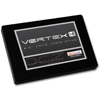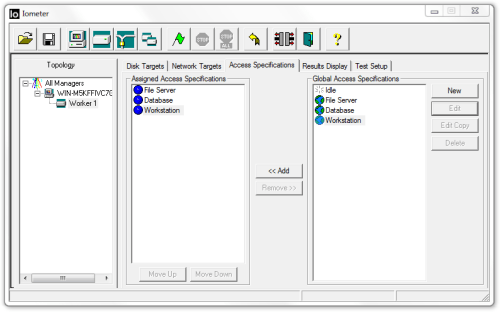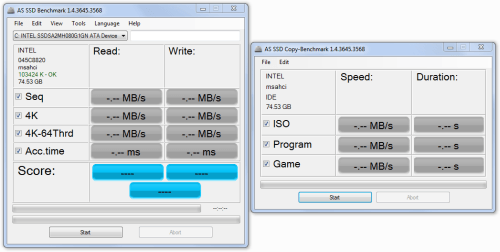- Qualcomm Launches Snapdragon 4 Gen 2 Mobile Platform
- AMD Launches Ryzen PRO 7000 Series Mobile & Desktop Platform
- Intel Launches Sleek Single-Slot Arc Pro A60 Workstation Graphics Card
- NVIDIA Announces Latest Ada Lovelace Additions: GeForce RTX 4060 Ti & RTX 4060
- Maxon Redshift With AMD Radeon GPU Rendering Support Now Available
OCZ Vertex 4 240GB SATA 6Gbit/s SSD Review

The Vertex is back, and this time it features more OCZ than ever before! (No, we’re not kidding.) Powered by its latest Everest 2 platform, the Vertex 4 is a completely in-house SSD that not only brings Indilinx back to the table, but very well has the potential to be the most reliable Vertex-branded SSD we’ve ever seen.
Page 4 – Synthetic: Iometer & AS SSD
Originally developed by Intel, and since given to the open-source community, Iometer (pronounced “eyeawmeter”, like thermometer) is one of the best storage-testing applications available, for a couple of reasons. The first, and primary, is that it’s completely customizable, and if you have a specific workload you need to hit a drive with, you can easily accomplish it here. Also, the program delivers results in IOPS (input/output operations per second), a common metric used in enterprise and server environments.
The level of customization cannot be understated. Aside from choosing the obvious figures, like chunk sizes, you can choose the percentage of the time that each respective chunk size will be used in a given test. You can also alter the percentages for read and write, and also how often either the reads or writes will be random (as opposed to sequential). I’m just touching the surface here, but what’s most important is that we’re able to deliver a consistent test on all of our drives, which increases the accuracy in our results.
Because of the level of control Iometer offers, we’ve created profiles for three of the most popular workloads out there: Database, File Server and Workstation. Database uses chunk sizes of 8KB, with 67% read, along with 100% random coverage. File Server is the more robust of the group, as it features chunk sizes ranging from 512B to 64KB, in varying levels of access, but again with 100% random coverage. Lastly, Workstation focuses on 8KB chunks with 80% read and 80% random coverage.
Because these profiles aren’t easily found on the Web, with the same being said about the exact structure of each, we’re hosting the software here for those who want to benchmark their own drives with the exact same profiles we use. That ZIP archive (~3.5MB) includes the application and the three profiles in an .icf file.



Iometer may be a hard program for users to translate into real world performance, but it is one of the few programs that can truly stress the latest models of SSDs now available and illustrate the differences between them, let alone show what they are truly capable of. Any SSD that does well here is capable of the toughest load conditions found in server racks, so suffice to say it can withstand any usage scenario a desktop user might throw at it.
This test turns out to be extremely informative. For those astute readers wondering what the real difference was between an m4 and the V4, this test showcases that completely. IOPS performance baby! Results range from a doubling the read and write IOPS of the m4 at the low end, all the way up to almost four times the read/write IOPS performance in the workstation scenario. The Vertex 4 may share a similar genealogy to the m4, but that’s it. This clearly illustrates why the firmware package can be even more important than the controller hardware itself, and the Indilinx firmware package is definitely the better performer here. It isn’t the best results we have seen, but just to keep perspective, check out the traditional hard disk performance for a suitable reference point.
AS SSD
As the name hints, AS SSD is a nifty little program written exclusively for solid-state drives. It can be run on a mechanical hard drive, but be warned what takes a few minutes will require the better part of an hour to complete! This handy tool measures sequential reads and writes in addition to the important 4KB random reads and writes, then ranks the results with a final score for quick comparisons with other SSDs.
In addition to the main test there is a secondary benchmark that simulates the type of data transferred for ISO, Program, and Game files. With version 1.6 a compression benchmark was also added although not utilized here. We selected this program for its precision, ability to generate large file sizes on the fly, and that it is written to bypass Windows 7’s automatic caching system. The tool does not bypass any onboard cache.





Interestingly, the Vertex 4 gets edged out by just a mere 15-30MB/s on the sequential read test, but puts forth some extraordinarily better 4K-thrd results compared to the m4, and in fact better 4K and 4k-thrd read results than every other SSD here, which is no small feat.
4K-Thrd is similar to the 4K test but spawns multiple requests; basically this tests how good the SSD is at handling multiple file actions at once, aka queue depth. Queue depth wasn’t an issue with HDDs as they were generally too slow to handle more than a few simultaneous IOPS at a time (as illustrated in our Iometer results), but with SSDs it is important to have a good controller with a high queue depth capability for the best, most consistent performance.
The Vertex 4 has no trouble taking an easy lead in all of the write tests, surprisingly able to offer better 4K-Thrd write performance than a SandForce SF-2281 can with best case sequential performance. Not only does it take the lead, but more importantly it delivers consistently better performance regardless of sequential writes or random write IOPS showing the V4’s firmware tuning to be fairly balanced.
While in real world performance nobody will notice the difference between 0.1ms and 0.03ms, it is nonetheless quite impressive to see OCZ’s claims about the ultra-low write access times to be reflected in the results. Noticeable or not, that is still a full order of magnitude difference in the access times and has to be pushing the boundary limits of the underlying NAND’s own capabilities.
With the strong performance in both reads and write tests it is no surprise to see the Vertex 4 get an average overall score of 1040, which is the highest AS SSD score we have seen to date. Individual read and write scores are also both comfortably higher than the nearest competitor at 405 and 424 respectively.
Support our efforts! With ad revenue at an all-time low for written websites, we're relying more than ever on reader support to help us continue putting so much effort into this type of content. You can support us by becoming a Patron, or by using our Amazon shopping affiliate links listed through our articles. Thanks for your support!






